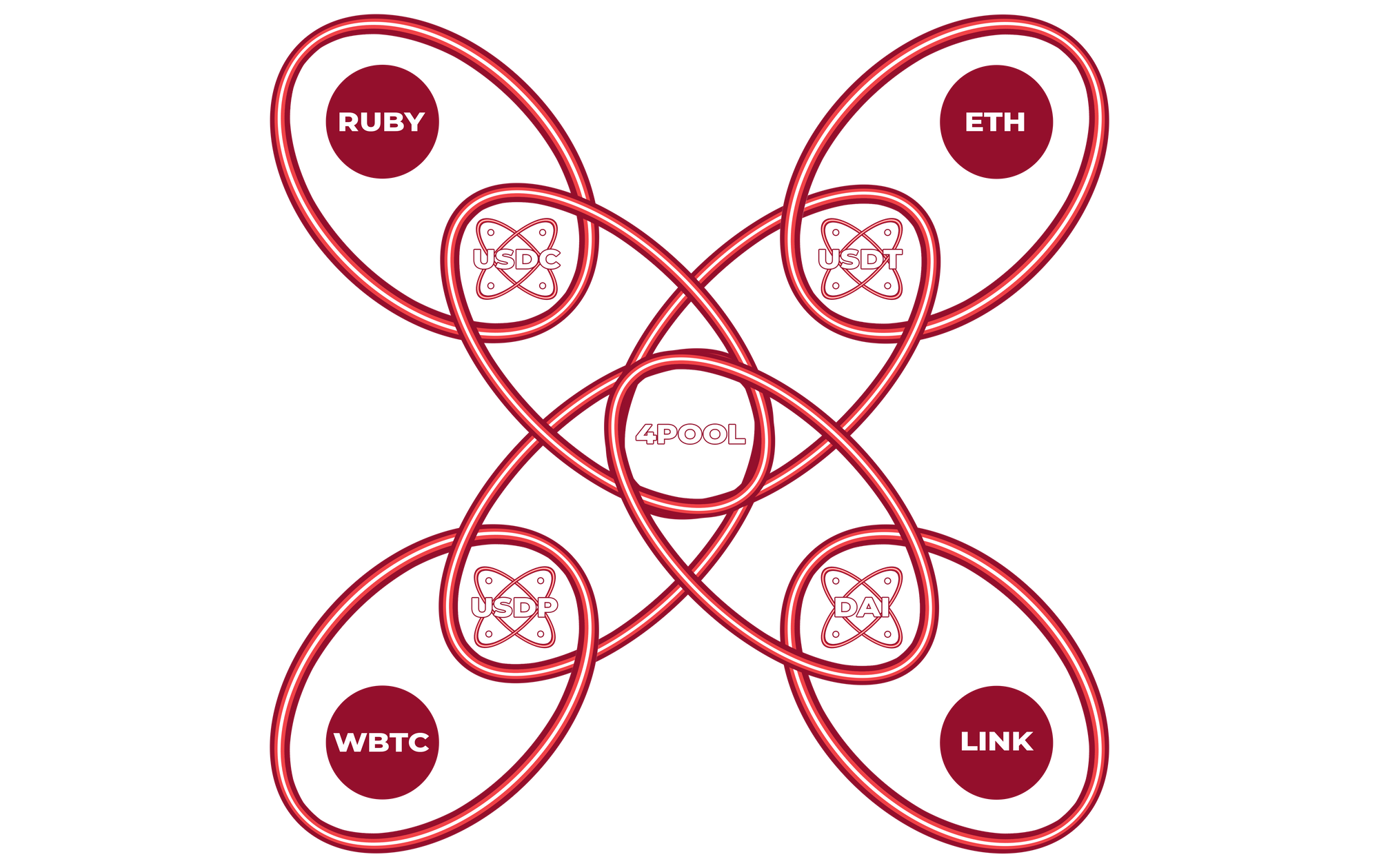Every token on Ruby.Exchange will be paired against a single stablecoin in its own pool, while a four-coin StableSwap pool will enable efficient trading between stablecoins.
This approach ensures maximum concentration of liquidity for each asset. Ruby's Intelligent Trade Router (ITR) will then set an order flow that will automatically guarantee the best execution with the lowest possible slippage for all trades—whether they are token-to-stablecoin, stablecoin-to-stablecoin, or token-to-token trades.
4Pool StableSwap
With the introduction of a gas-free StableSwap pool supporting USDT, USDC, USDP, and Dai, Ruby will provide vital infrastructure for the SKALEVERSE and cater to the vast majority of users within the Ethereum-based stablecoin sector. The ability to stake and swap four major stablecoins so efficiently offers a powerful argument for moving liquidity to SKALE. Meanwhile, the 4Pool forms an integral part of the logic of the Ruby AMM, helping to drive one of the exchange's most important features.

Supporting four stablecoins is attractive because it increases overall trading volumes and gives liquidity providers greater choice and better earnings. But the stablepool itself is only a first step: By routing trades that start in Ruby's regular xy=k pools through the stablepool, all traders will enjoy maximum liquidity and efficiency, no matter which two assets they want to swap.
Intelligent Trade Router (ITR)
Ruby's Intelligent Trade Router automatically selects the order flow for any asset pair. While the user experience remains clean and elegant, behind the scenes the AMM routes the order through the relevant pools to ensure trade execution with the lowest possible slippage.
For example, a user may have USDC and want to trade it for RUBY, which is paired with USDP in a RUBY-USDP pool. They enter USDC -> RUBY in the swap interface, and the protocol automatically routes the trade through the stablepool behind the scenes, first converting USDC to USDP, and then USDP to RUBY.
The same approach is taken for any two non-stablecoin assets. These will be held in standard "xy=k" AMM pools, but will be routed by the ITR through the stablepool. So, for example, the trade flow might be: ETH -> USDT -> USDP -> WBTC.

This design choice guarantees that users can swap any asset for any other asset efficiently (i.e. with the lowest slippage possible), since liquidity for each token is concentrated in a single pool. It will also bring additional liquidity to the stablepool, and fees to liquidity providers, since a large percentage of trades will be routed through the StableSwap.
Making Low-Slippage Trading The Norm
Ruby's architecture is designed to maximize efficiency across the entire range of pools. By using the StableSwap pool as a "hub" through which to route trades, it's possible to create just one pool for each (non-stablecoin) crypto asset, concentrating liquidity and reducing slippage overall.
Along with fast order execution and zero gas costs, this approach makes Ruby.Exchange an attractive option for traders, while liquidity providers will receive additional trading fees.
Subscribe to Ruby's blog for regular updates, and follow us on Twitter and Telegram.






